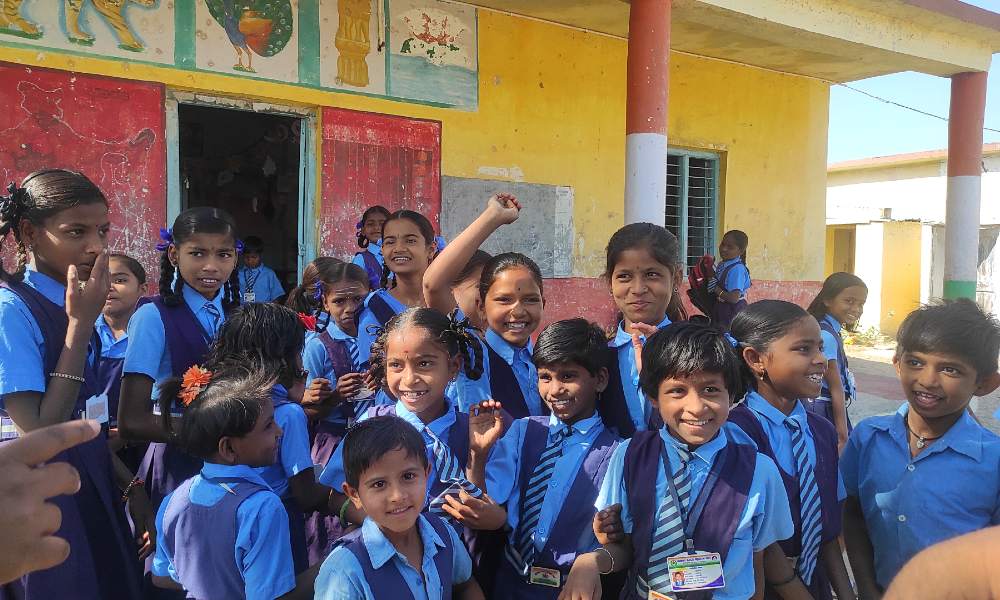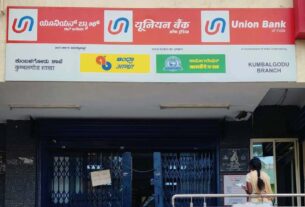Reports show that around 60 percent of government schools in Karnataka lack computer facilities.
Around 60 percent of government schools in Karnataka, the country’s Information Technology (IT) hub, lack digital infrastructure including computer labs, laptops, and smart classes.
A report by the Unified District Information System for Education (U-DISE) reveals that only 40.7 percent of government schools in Karnataka, have computer facilities. However, 87.3 percent of private schools provide such facilities to their students.
The report further mentions that out of the 49,679 government schools in the state, only 20,204 schools have computer facilities. Nonetheless, only 18,773 of these schools have functional computers.
Parents are worried about the lack of digital infrastructure in government schools. Venkateshalu Reddy, an auto driver in Bengaluru, sends his child to a private school because the government school in his area does not have facilities for digital learning. He said that this would give her better education and help her master computers and other technologies. However, the tuition fee is an additional burden that makes him run errands to make ends meet every month.
However, data from the Samagra Shiksha Karnataka, Department of School Education, indicates that all 4876 secondary schools in the State have either desktops, laptops, or smart classrooms. Out of this 2531 schools have complete Information and Communications Technology (ICT) setup, while the rest only have smart classes, said Saritha. G, Joint Program Officer of Samagra Shiksha, Karnataka.
The situation of primary schools, in the state is no better. Saritha said that out of the 42,255 lower and upper primary schools in Karnataka, only 5072 schools have computer facilities.
The Education Department said that they were trying to bring computer facilities to more schools every year. “We are planning to introduce ICT facilities in 1631 schools this year.” The work is in progress, Saritha added.
She said that around 25,000 primary schools in the state have an enrollment rate below 50. Schools with more enrollment are our priority, she added.
Even though some schools have computer facilities, there is no one to teach the students. Shankaramma, Head Mistress of GKEMPS Government School, in Kesava Nagar, Bengaluru, said that the school is equipped with a functional computer lab, however, there is no subject teacher to take computer lessons, so other teachers teach them. She also mentions that none of these teachers have received any training to take computer classes.
Similarly, Suma, an office assistant from Government High School, SR Nagar, Bengaluru, complained that though the school has a computer lab, it lacks a computer trainer. They make do with representatives from Team Shikshan, an NGO working on child rights and education who come to schools once a week and teach computer lessons, she said.
The situation is worse when it comes to rural areas. Manvi is one of the aspirational taluks in Raichur District according to the Human Development Index (HDI). A HDI 2022 report for Karnataka, mentions that only 2.39 percent of government schools in Manvi Taluk have ICT lab facilities.
Out of the 43 High Schools in the taluk, only 20 have computer lab facilities, said Narendra Babu, Superintendent at Block Education Office, Manvi.
The HDI report further mentions that only 28.36 percent of teachers in the taluk are trained to teach computers.
Shivani, a class eight student from GHS Konapurpet, was excited when her school introduced desktops. But the excitement didn’t last long, as she would rarely get to use them. “There is no one to teach us computers, and often computer classes are not conducted,” Shivani said.
Similar complaints were raised by students from different government schools in Manvi.
Experts suggest enrolling separate qualified teachers to teach computers, proper training and good digital infrastructure in government schools to promote digital learning among students.
Girija MP, Program Associate, at IT for Change, a Bengaluru based NGO, that uses tech for development issues, said that a specified teacher who is qualified to teach computer usage must be employed in government schools.
She further suggests introduction of better digital infrastructure. “Most higher primary schools don’t have facilities like labs, and even when computers are there in some schools teachers there don’t know how to teach.”
Most students in government schools are from marginalized communities, and have no access to computers in their homes, said Girija. “When we organize lab activities for these students we observe that most of them are very curious about learning computers and they catch up very easily.
ICT initiatives in Karnataka
ICT education in the schools has been practiced in Karnataka for many years. According to the report by Vidyavahini, monitoring Samagra Shikshana Karnataka, mentioned that the state has implemented ‘Mahithi Sindhu’, programme in 2000, which was followed by three phases of ICT programmes till 2013.
The minimal ownership of the teachers, as the projects were implemented by instructors hired from outside and the schemes ending up in procurement of the hardware and not being used properly were identified as the major drawbacks of the previous approaches by the report.
Considering these factors, Karnataka Government restructured the ICT programme and integrated all technology based programmes under the umbrella of Technology Assisted Learning Programme (TALP) in 2016-17.
TALP comprises of Educational Satellite (EDUSAT), Computer Assisted Learning Centres (CALC) under Sarva Shiksha Abhiyan (SSA), Radio programmes and IT@Schools in Karnataka.
Further, TALP capacity building training program was introduced under TALP, with the objective of enabling teachers of Primary, High school and pre-university colleges to use technology skills in the process of facilitating student learning, revitalize their professional attitudes and to create e-resources necessary for teaching-learning processes. The training is conducted with the support and guidance Central Institute of Educational Technology (CIET) department of National Council of Educational Research (NCERT).
This training program is conducted in 3 phases; Induction, Refresher Course-1 and Refresher Course-2. According to the TALP website, 38624 teaching professionals were given Induction training and 9644 were given training under Refresher Course-1.
Geetha, Head Mistress of K. Gollahalli Government High School, said that teachers from the school have received Induction training.
Experts say that more initiatives should be taken towards building digital infrastructure in schools.
Girija suggests installing more number of computers in schools. “If we provide computers in 1:1 or 1:2 ratio to students, it will give them the opportunity to learn how to use computers more efficiently.
She further said that teachers are focusing more on syllabus completion, they stick to the videos provided by the department and do not go beyond that. “When it comes to conceptual understanding for the students, it will be good to explain the abstract concepts,” she added.




